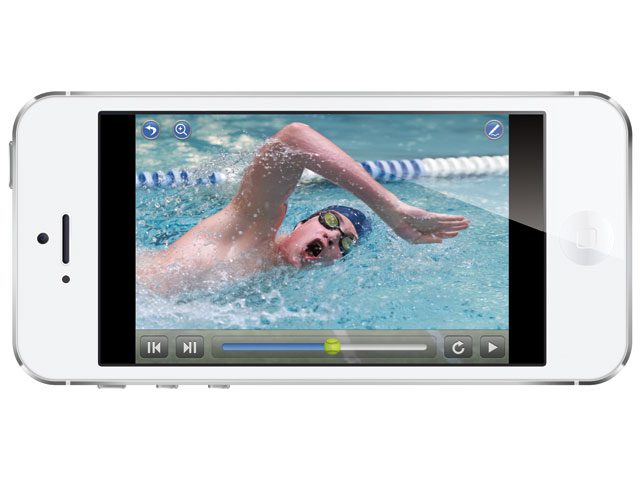Swim video analysis: The best tools for the best results
Seeing what you're doing in the water can make all the difference

One of the latest trends in swim coaching is video analysis. Way back when, if a coach wanted to see what an athlete’s stroke looked like under the water, they would either have to disappear into a small room underneath the pool deck with a window (if the pool was so equipped) or simply lie on the bottom of the pool and watch their swimmers go over them. Technology has made things a lot easier for coaches now – these days there’s a huge variety of options available to provide video feedback to swimmers. “Using a video camera to have a friend record you swimming, and then watching the video (preferably with somebody who knows how to swim properly) is the single most powerful method I have ever found for becoming a better swimmer,” says Ben Greenfield, a coach and elite triathlete who runs his own fitness company. Greenfield suggests a combination of both “overwater” analysis from the front and side, combined with a look at your underwater stroke to get the most out of this coaching feedback.
Out of water video
Virtually any camera or device that will shoot video will do the trick for this type of analysis. To start with, you’ll want to get some video footage of the person swimming away from, then towards you. This will allow you to get a feel for things like the entry position (in line with the shoulders, too wide or crossing over) and head position – is the head buried too much in the water, or possibly tilted too far back? The next step is to get some shots of them swimming away from you – this is the best view to see if the athlete is rolling through the water or if his or her hips are moving from side to side. The next step is to get some shots from the side. Walk along the side of the pool while the athlete swims a full length, starting a bit ahead, letting them catch up. Walk along next to them for 10 m or so, then let them get a bit ahead so you can capture some footage from slightly behind. This footage will be especially helpful for getting a feel for the length of the stroke – are they reaching out in front and finishing their stroke?


Go Pro HD Hero2
Underwater video
The days of it being expensive to get some underwater video of your swimming are long gone. The LifeProof iPhone case will even let you use your phone to get underwater video these days, but that’s just one of many options. (Last fall we experimented with the GoPro Hero 2 in an underwater housing to get some excellent underwater footage.) Like the out of water video analysis, you’ll want to get some footage from both the side and the front to get the most benefit. From these shots you should be able to see how much the arm is bent under the water, whether the elbow is higher than the hand as you pull, whether the stroke remains balanced while breathing and how even the kick is.


Analysis tools
Once you have this video, there are a number of ways you can get some feedback from it. Ideally you will review the video with your own coach, who can provide some tips and redo the analysis after a few months to measure your progress. For those who don’t have easy access to a coach, Greenfield is one of many coaches who offer video analysis service. Either yourself or your coach might want to utilize one of the many applications available to help with video analysis, too. Applications like Video Coach and Coach’s Eye allow you to utilize slow motion and frame by frame analysis to get the most out of your video.
